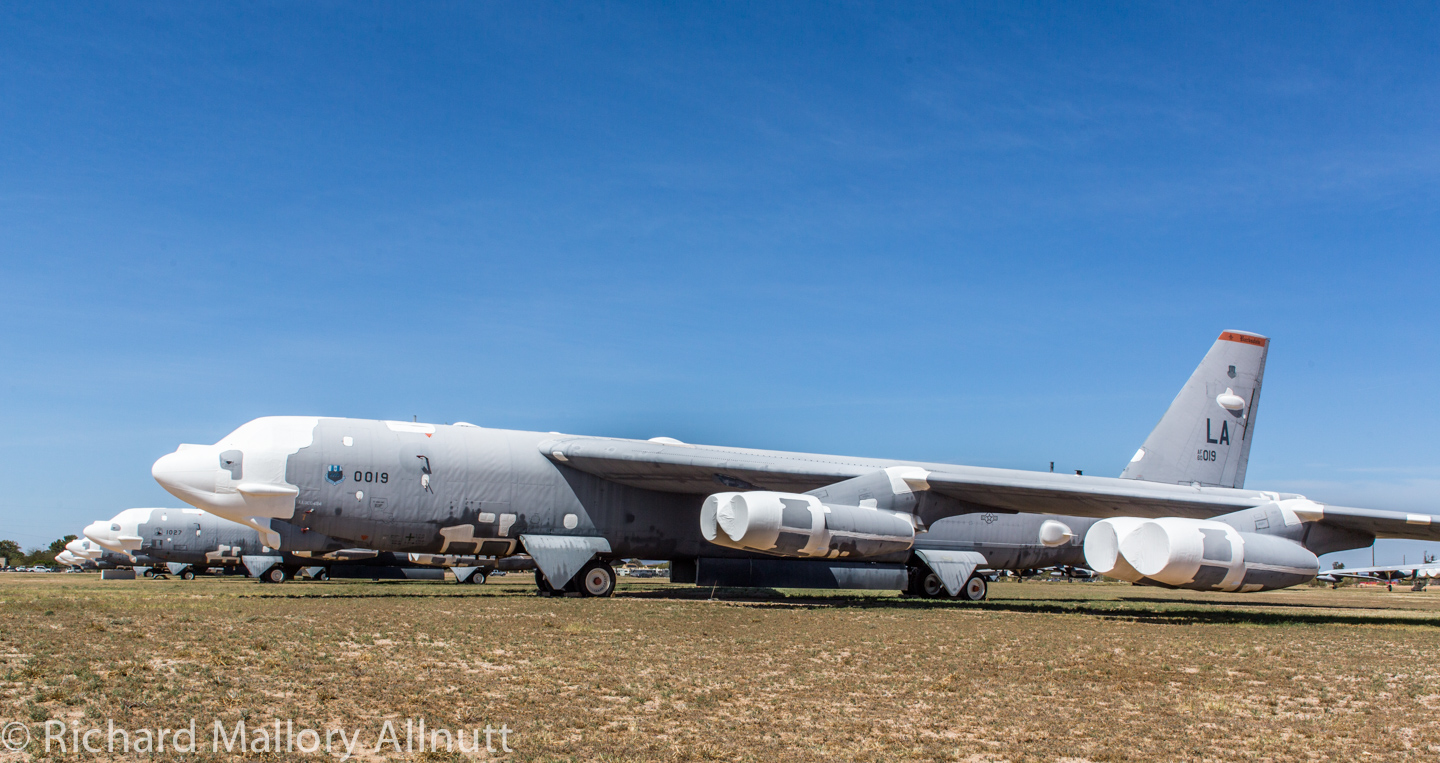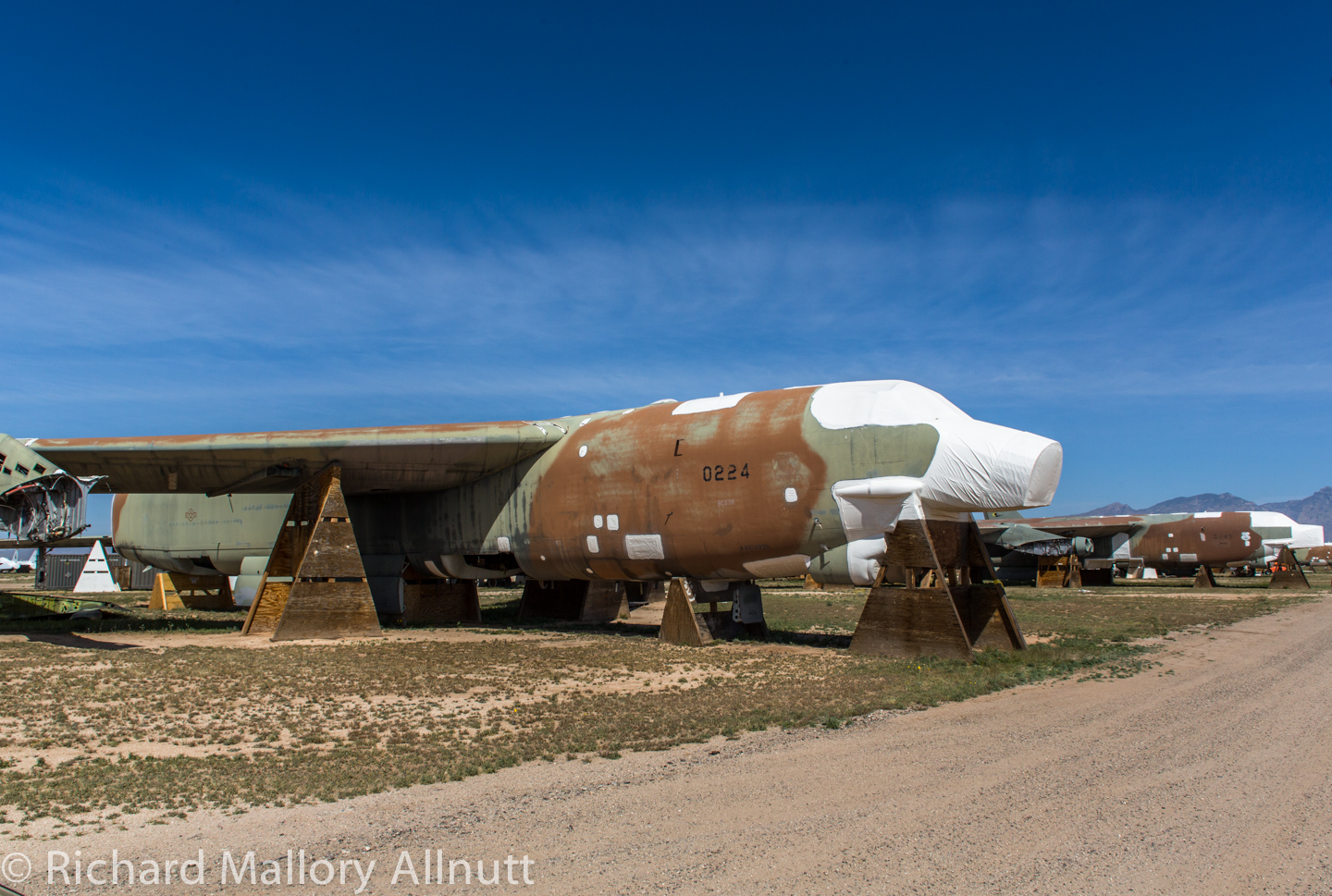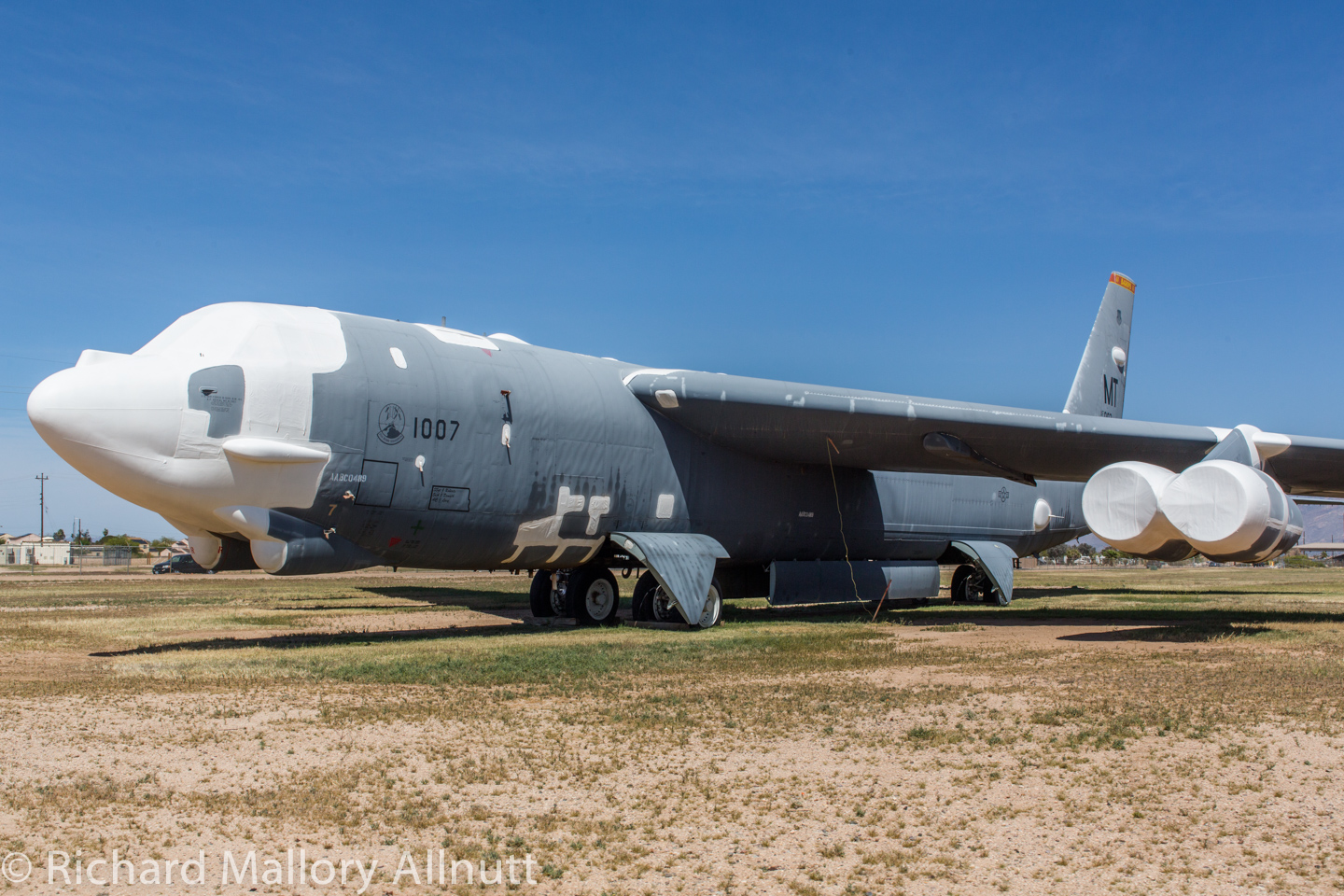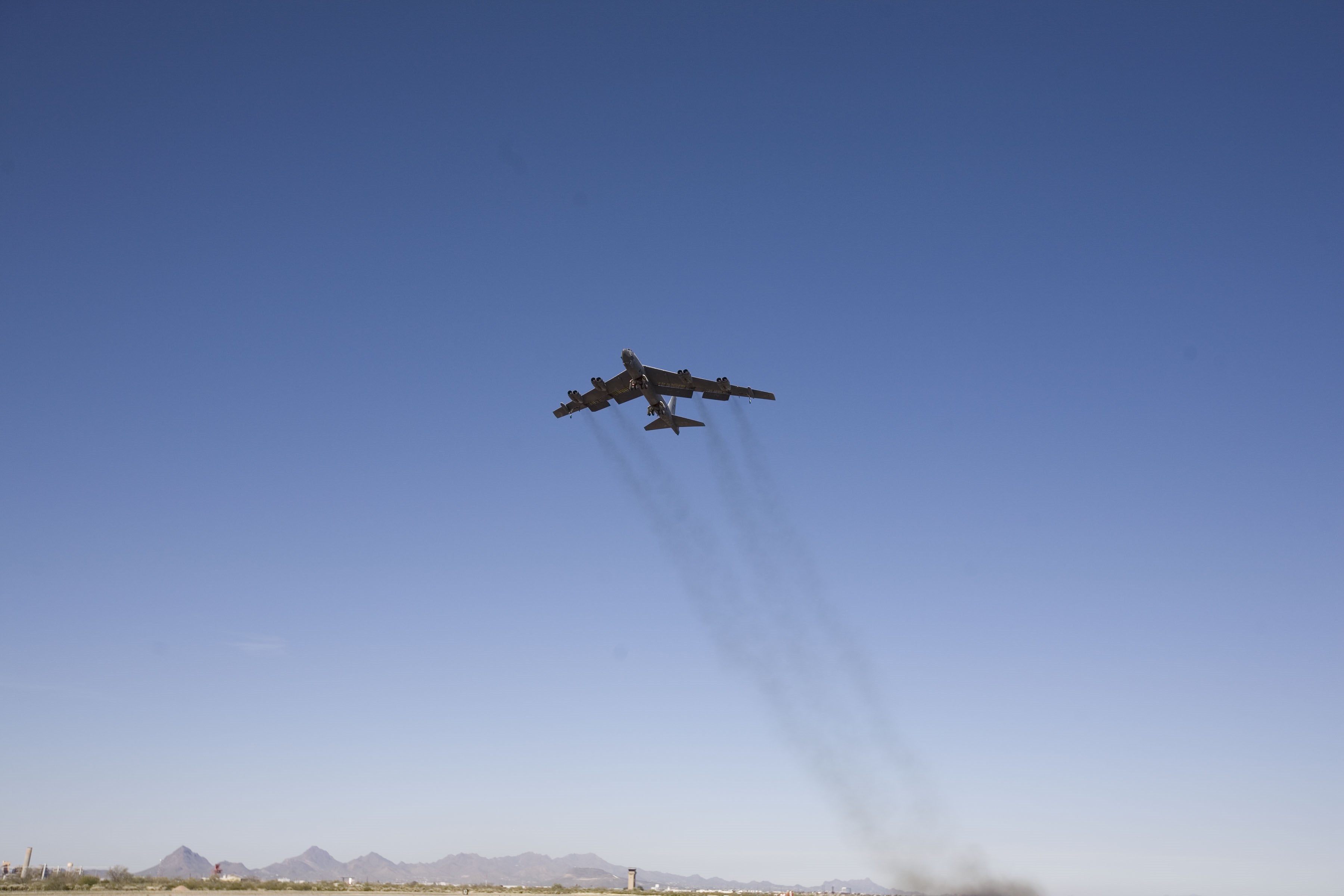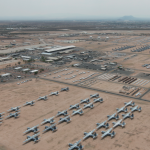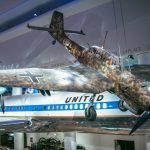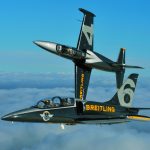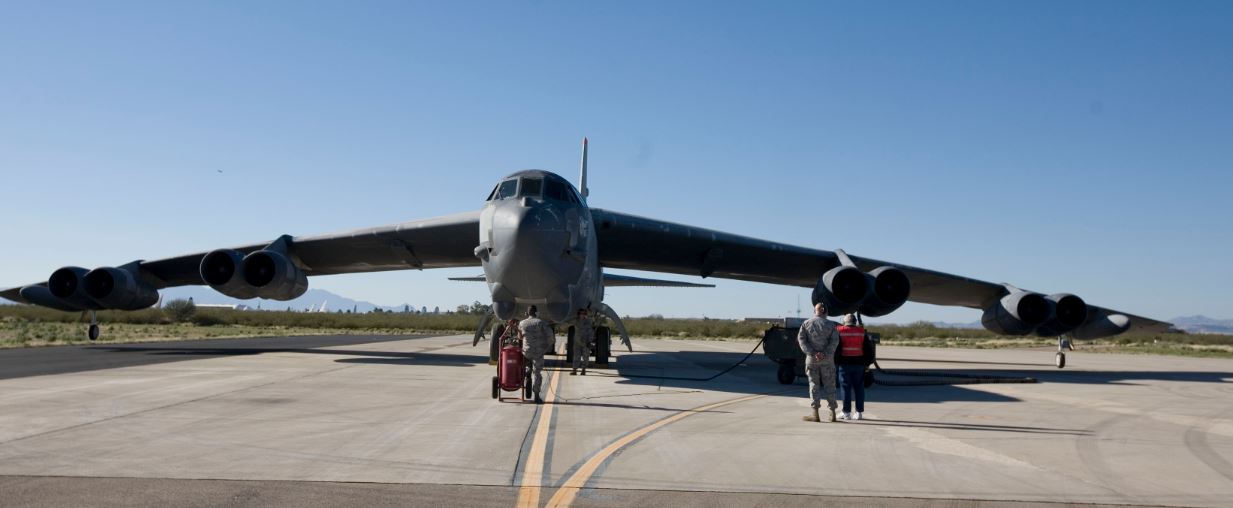
For the very first time, a Boeing B-52 Stratofortress has moved from the boneyard back into the sky again. The veteran bomber took off from Davis-Monthan Air Force Base in Tucson, Arizona for the first time following its restoration on Friday, the 13th of February. Technicians at the 309th Aerospace Maintenance and Regeneration Group, otherwise known as AMARG, pulled the BUFF from the massive storage yard beside Davis-Monthan during 2014 to replace a damaged aircraft in the active fleet which the Air Force deemed beyond economic repair.
The newly restored Stratofortress, serial number 61-0007, had been in 1000-level storage at AMARG alongside twelve other B-52Hs, far away from the ragged, chopped up Stratofortress carcasses on the other side of the boneyard. Unlike other 1000-level aircraft, or inviolate storage where an airframe is made safe and preserved without losing any parts to salvage, these bombers are looked after in a far more detailed and careful fashion at AMARG. Each Stratofortress in this small group has its own plane captain at the base whose primary responsibility is to monitor its health regularly and quickly intercede when maintenance is necessary. This practice has clearly shown its worth, judging by the mere months it took to return the aircraft to flight following years of storage.
Nicknamed “Ghost Rider”, ‘007 last served with the 5th Bomb Wing from Minot AFB before going into storage in the mid-2000s. The AMARG team selected her for regeneration because, of the thirteen B-52Hs in storage, she was in the best condition and had the lowest airframe hours. In fact she is in such good shape that members of her maintenance team felt ‘Ghost Rider’ was better off than several active airframes currently serving.
‘Ghost Rider’ was present at AMARG in March, 2014 when WarbirdsNews paid the facility a visit, and we have included an image above to show what she looked like then. Technicians from the 309th alongside those from Tinker AFB (responsible for B-52 depot-level maintenance) swiftly returned the bomber back into flying trim. She departed Davis-Monthan yesterday for Barksdale AFB near Bossier City, Louisiana. Colonel Keith Schultz, CO of the 307th Operations Group, 307th Bomb Wing at Barksdale AFB commanded the flight. He has been flying BUFFs since 1980, and is the “last of the Tall-Tail” pilots still actively flying the Stratofortress; “Tall-Tail” being the nickname for early-model B-52s which had much taller tail fins than the G and H models. Schultz has more than 7,000 hours in B-52s. In an article HERE, Colonel Schultz said “After delivering eighteen B-52D and G models to the “Boneyard” over the years, it is about time I get to take one out.”
While at Barksdale AFB, members of the 76th AMXG from Tinker AFB will remove modifications from the damaged B-52 that ‘007 is replacing and transfer them to the freshly restored airframe. At the same time, local Barksdale maintenance teams will inspect the airframe and repair as necessary. Once these details are complete sometime in late 2015, ‘Ghost Rider’ will fly to Tinker AFB in Oklahoma City, Oklahoma for Program Depot Maintenance to bring her in line with the rest of the fleet. The fifty year old bomber is expected to return to front line service sometime in 2016.








